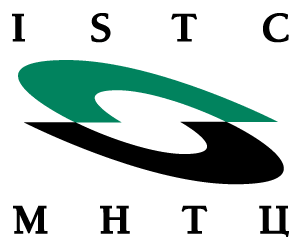 ASTANA – At a June 5 roundtable held in the United States diplomatic office in Kazakhstan,the Deputy Assistant Secretary of State for non-proliferation and theU.S. representative to the International Science and Technology Centre (ISTC) Simon Limazh discussed new technologyand the new ISTC headquarters in Astana,amongst other issues.
ASTANA – At a June 5 roundtable held in the United States diplomatic office in Kazakhstan,the Deputy Assistant Secretary of State for non-proliferation and theU.S. representative to the International Science and Technology Centre (ISTC) Simon Limazh discussed new technologyand the new ISTC headquarters in Astana,amongst other issues.
“There are strong links between the research and business communities in Kazakhstan and the ISTC. Since Kazakhstan became a member of the International Science and Technology Centre, 184 projects worth $66 million have been allocatedto benefit Kazakhstan’s scientists. Projects in biotechnology, fission reactors, chemistry, environment and medicine received most of the financing. All major Kazakh research and developmentinstitutionsparticipate in ISTC projects, often with their partners in the Commonwealth of Independent States (CIS), European Union (EU), Canada, Japan and the United States. The projects generate high quality basic research and possibilities to bring this research to the marketplace. For 2014, there is more than $6 millionin projected funding,” Limazh said.
He recalled that the ISTC is a leading organisation engaged in management, finance, scientific and technical cooperation in non-proliferation in countries such as Japan, the United States, South Korea, the European Union and the former Soviet states. According to him, for 20 years, the centre supported and financed more than 3,000 scientific and technical projects.
“The United States looks forward to continued cooperation with the government of Kazakhstan and other ISTC countries as we work together to address the challenges in the field of security and science,” Limazh added.
The U.S. representative to the ISTC also added that the organisation has funded a wide range of sectors and major projects such as energy, agriculture, medicine, aerospace research, materials science, physics and many other sectors.
“On the 15th anniversary of the ISTC, [Kazakh] President [Nursultan] Nazarbayev expressed his ‘deep gratitude for the organisation’s work,’whilstlooking forward to continuous cooperation with the ISTC for the sake of world peace and progress,” Limazh said.
According to him, during his visit, he had the opportunity to talk with representatives of the government of Kazakhstan on the ISTC Governing Board, where moving the ISTC headquartersfrom Moscow to Astana was discussed.
“In 2011, Russia announced its intention to leave the ISTC. Since that time, the ISTC Governing Board has worked hard to find a new office for its headquarters. There are still some details that we need to clarify, includingthe signing ofthe agreement on continuing theISTC activity. The charter requires discussion as well. We are close to completing the procedure of moving,” Limazh said.
He also spoke about how allmajor research organisations in Kazakhstan participate in ISTC projects. “They often interactwith scientists from other countries in the CIS, the EU, Canada, Japan and the United States. These projects were aimed to implement high-quality projects in basic science and werealso focused on bringing new technologies to the market,” he added.
According to him, there is a very tough examination procedure for potential projects for funding.
“For 2014, the ISTC has a budget of $6 million worldwide.ISTC member states will decide which projects they will fund. Currently, we are in the process of reviewing the new pool of projects,” Limazh said.
The Ministry of Education and Science (MES) is the lead agency for the ISTC in Kazakhstan. An ISTC Branch Office has existed in Almaty since 1995. The continued growth of research collaboration in Kazakhstan and increases in project funding have required expansion of the current ISTC branch office to relocate the ISTC main headquarters from Russia to Kazakhstan. In December 2011, the President of the Academy of Sciences of Kazakhstan agreed that the new ISTC Headquarters would relocate to Kazakhstan with a preliminary expansion of the current ISTC branch office.
Nazarbayev University (NU) in Astana was eventually named the new ISTC office location. The new ISTC headquarters will be permanently housed in the university’s future NU Science Park. A temporary office facility is being made available until the permanent space is completed. The projected date of the move is spring 2016. In December 2013, the ISTC, in conjunction with NU, finalised the office space agreement, which came into effect on Dec. 22, 2013. The interim temporary office space facility has now been renovated and equipped and was officially opened after the ISTC Governing Board meeting on June 5.
In addition to the ISTC move toNU, the university applied for and was recommended by the Ministry of Education and Science for a partnership with the ISTC. In 2012,NU was accepted as a partner of the ISTC, creating the first such partnershipin the history of the ISTC.
During the past 20 years,$1 billion has flowed through ISTC to support approximately 3,000 research and development projects in a wide range of scientifically and socially important topics in energy, agriculture, medicine, material science, aerospace, physics and many other areas. In addition to the thousands of scientific publications and hundreds of patents resulting from ISTC projects, international collaboration was developed between leading institutes such as CERN, Lawrence Livermore, Institut Pasteur, the CDC, the IAEA and the Japan Atomic Energy Agency, not to mention industrial leaders such as Airbus, Boeing, Hitachi, Samsung, Philips, Shell, GE and others.


